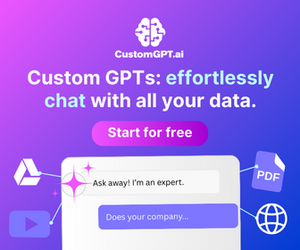-
Table of Contents
- Mastering the Art of Writing an Artificial Intelligence Paragraph
- Why Writing About AI Matters
- The Role of Clarity in AI Writing
- Structuring Your Artificial Intelligence Paragraph
- Example of a Well-Structured AI Paragraph
- Using Examples and Case Studies
- Case Study: AI in Retail
- Incorporating Statistics and Data
- Tips for Using Data Effectively
- Common Pitfalls to Avoid
- Overcoming Writer’s Block
- Enhancing Your Writing with Transition Words
- Examples of Effective Transitions
- Leveraging Synonyms for Variety
- Synonyms to Use in AI Writing
- Conclusion: Crafting Impactful AI Paragraphs
Mastering the Art of Writing an Artificial Intelligence Paragraph

Artificial intelligence paragraph writing can be a daunting task, especially if you’re new to the field or struggling to articulate complex ideas. Whether you’re crafting content for a blog, research paper, or business report, understanding how to structure and convey AI concepts effectively is crucial. This guide will walk you through the process, offering practical tips, examples, and insights to help you create compelling and informative paragraphs about artificial intelligence.
Why Writing About AI Matters
Artificial intelligence is transforming industries, from healthcare to finance, and its impact is only growing. Writing about AI allows you to educate, inform, and inspire others. A well-crafted artificial intelligence paragraph can simplify complex topics, making them accessible to a broader audience. It also positions you as a thought leader in this rapidly evolving field.
The Role of Clarity in AI Writing
Clarity is essential when discussing artificial intelligence. Avoid jargon and technical terms unless necessary, and always define them when used. For example, instead of saying “neural networks optimize hyperparameters,” you could write, “neural networks fine-tune settings to improve performance.” This approach ensures your audience understands your message without feeling overwhelmed.
Structuring Your Artificial Intelligence Paragraph
A well-structured paragraph is key to effective communication. Start with a clear topic sentence that introduces the main idea. Follow with supporting sentences that provide evidence, examples, or explanations. Conclude with a sentence that ties everything together or transitions to the next paragraph.
Example of a Well-Structured AI Paragraph
Consider this example: “Artificial intelligence is revolutionizing healthcare by improving diagnostic accuracy. For instance, AI algorithms can analyze medical images faster and more accurately than human doctors. A study by Stanford University found that AI detected skin cancer with 95% accuracy, compared to 86% for dermatologists. This technology not only saves time but also enhances patient outcomes.”
Using Examples and Case Studies
Examples and case studies make your writing more engaging and credible. They provide real-world context and demonstrate the practical applications of AI. For instance, you could discuss how Netflix uses AI to recommend personalized content or how Tesla’s self-driving cars rely on machine learning algorithms.
Case Study: AI in Retail
Retail giants like Amazon leverage AI to enhance customer experiences. Their recommendation engine analyzes user behavior to suggest products, increasing sales and customer satisfaction. According to a McKinsey report, AI-driven personalization can boost revenue by up to 15%. This example highlights the tangible benefits of AI in everyday life.
Incorporating Statistics and Data
Statistics add authority to your writing. Use data from reputable sources to support your claims. For example, you could mention that the global AI market is projected to reach $1.8 trillion by 2030, according to Grand View Research. This statistic underscores the growing importance of AI in various sectors.
Tips for Using Data Effectively
- Choose relevant and up-to-date statistics.
- Cite your sources to build credibility.
- Explain the significance of the data in simple terms.
Common Pitfalls to Avoid
When writing about artificial intelligence, it’s easy to fall into certain traps. Avoid overloading your paragraph with technical details or making exaggerated claims. Ensure your content is balanced and accurate. For example, while AI has many benefits, it also raises ethical concerns, such as bias in algorithms. Addressing these issues adds depth to your writing.
Overcoming Writer’s Block
If you’re struggling to start, try breaking the topic into smaller sections. Focus on one aspect of AI, such as its applications in education or its impact on job markets. This approach makes the task more manageable and helps you stay focused.
Enhancing Your Writing with Transition Words
Transition words improve the flow of your writing, making it easier to follow. Use words like “however,” “therefore,” and “for example” to connect ideas. For instance, “AI has many benefits; however, it also poses challenges, such as data privacy concerns.” This technique ensures your paragraph reads smoothly.
Examples of Effective Transitions
- “In addition to improving efficiency, AI also enhances accuracy.”
- “Despite its advantages, AI requires careful regulation.”
- “As a result, businesses are investing heavily in AI technologies.”
Leveraging Synonyms for Variety
Using synonyms keeps your writing fresh and engaging. Instead of repeating “artificial intelligence,” try terms like “machine learning,” “AI technology,” or “intelligent systems.” This variety prevents monotony and enriches your content.
Synonyms to Use in AI Writing
- Machine learning
- Deep learning
- Neural networks
- Automated systems
Conclusion: Crafting Impactful AI Paragraphs
Writing an artificial intelligence paragraph doesn’t have to be overwhelming. By focusing on clarity, structure, and engaging content, you can effectively communicate complex ideas. Use examples, statistics, and transition words to enhance your writing. Avoid common pitfalls and leverage synonyms for variety. With these strategies, you’ll be well-equipped to create compelling and informative paragraphs about AI.
For further reading, explore our articles on AI Applications, AI Ethics, and AI Trends. Additionally, check out these external resources: IBM AI, OpenAI, and McKinsey AI Insights.



Leave a Reply